
PUMPA - SMART LEARNING
எங்கள் ஆசிரியர்களுடன் 1-ஆன்-1 ஆலோசனை நேரத்தைப் பெறுங்கள். டாப்பர் ஆவதற்கு நாங்கள் பயிற்சி அளிப்போம்
Book Free DemoDid you see the recent news that most of the top honey brands failed in the purity test conducted by the government? Most of these brands mix sugar syrup in the honey and claim them as pure. So how do we check for adulterants at home? Here are some tips and tricks to perform at home.
Simple techniques that are used to detect adulterants at home are discussed below:
1. Milk:
In milk, water, detergent, starch is mixed or adulterated. To test the detection of water in milk, the following test is performed:
a) Place a drop of milk on a polished and slanting surface.
b) Pure milk either stays or slowly flows, leaving a trail (white in colour) behind.
c) Milk adulterated with water will flow fast without leaving a mark.
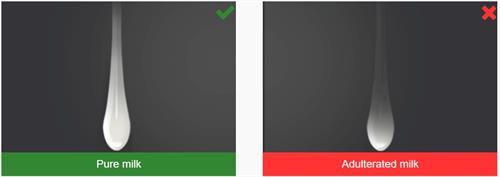
To test the detection of detergent in milk, the following test is performed:
a) Take \(5\) to \(10\) ml of milk sample with equal amounts of water.
b) Shake the contents thoroughly.
c) Pure milk forms a very thin foam layer due to agitation.
d) If milk is adultered with detergent, it forms thick or dense lather.
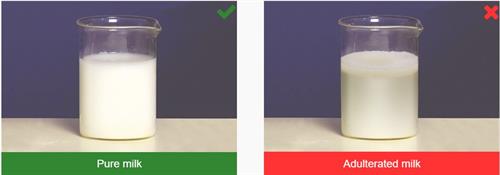
2. Honey:
Honey is often adulterated with sugar solution. To test the presence of sugar solution in honey, two different methods are employed.
Method 1:
a) Take a transparent glass of water.
b) Add a drop or a spoon of honey to the glass.
c) Pure honey does not disperse in water.
d) If the drop of honey disperses and mixes in water, it indicates the presence of added sugar.
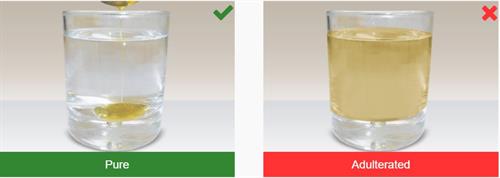
Method 2:
a) Take a cotton wick, and dip in the honey. Then light it with a match stick.
b) Pure honey will burn.
c) If adulterated, the presence of water will not allow the honey to burn. If it burns, there is a cracking sound.
3. Sugar:
Sugar is adulterated with chalk powder. To test the presence of chalk powder in sugar, the following test is done:
a) Take a transparent glass of water.
b) Dissolve \(10\)g of sample in water.
c) If sugar is mixed with chalk powder, the chalk powder will settle down at the bottom.
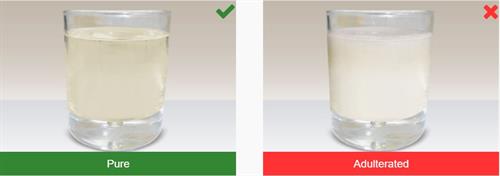
4. Coffee powder:
a) Add a teaspoon of coffee powder in a transparent glass of water.
b) Stir for a minute. Keep it aside for \(5\) minutes. Observe the glass at the bottom.
c) Pure coffee powder will not leave any particles at the bottom.
d) If coffee powder is adulterated, tamarind powder will settle at the bottom.
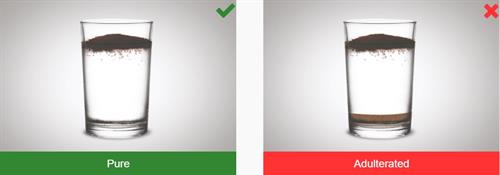
5. Food grains:
Foodgrains have visible adulterants like sand grit, stones, marbles etc. These can be removed by sorting, handpicking and washing etc.
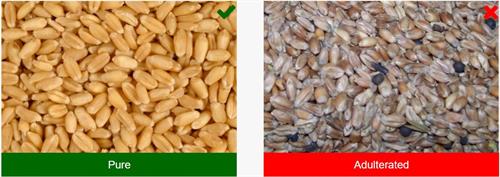
Other oils are adulterated or mixed with coconut oil. To test the presence of other oils in coconut oil, the following procedure is employed:
a) Take coconut oil in a transparent glass.
b) Place the glass in refrigerator for \(30\) \(minutes\). (Do not keep in the freezer)
c) After refrigeration, pure coconut oil solidifies.
d) If coconut oil is adulterated, then the other oils remain as a separate layer.
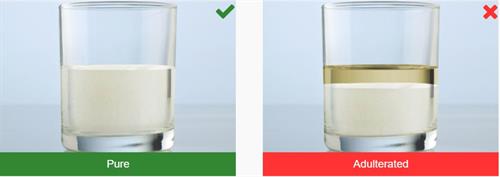
7. Pepper seeds:
Pepper seeds are often adulterated with papaya seeds. Papaya seeds can be identified by the following method:
a) Add a teaspoon of black pepper to a glass of water.
b) Pure black pepper settles at the bottom.
c) If the black pepper is adulterated with papaya seeds, the papaya seeds float on the surface of water.
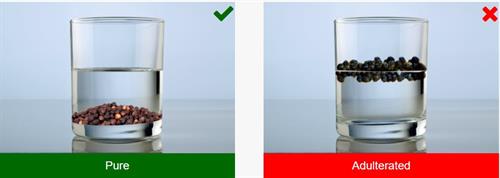
8. Green vegetables like green chilli, bitter gourd:
Colours like malachite green are added to the surface of the vegetable so that it looks bright and appears fresh. The test to detect the presence of malachite green is as follows:
a) Take a cotton piece soaked in water or vegetable oil.
b) Rub the outer green surface of a small part of green vegetable/chilli.
c) If the cotton turns green, then it is adulterated with malachite green.
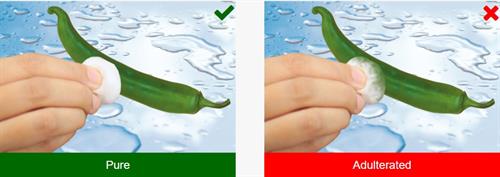
Reference:
https://fssai.gov.in/dart/